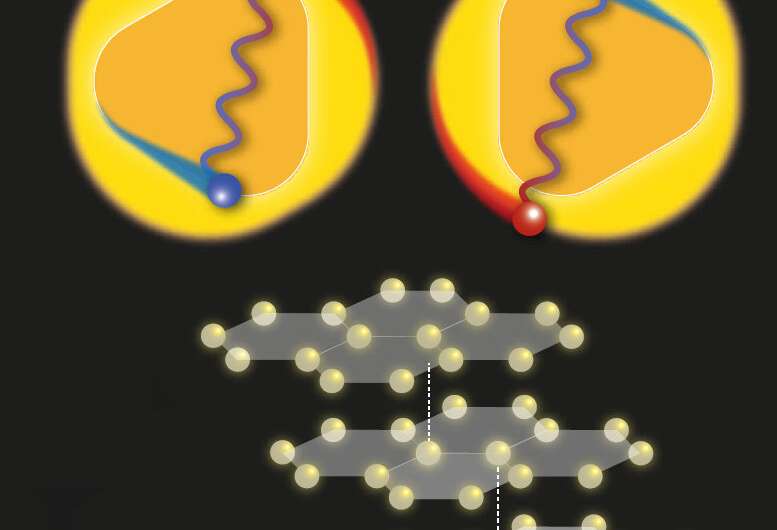
A single layer of carbon atoms
arranged in a honeycomb lattice makes up the promising nanomaterial called
graphene. Research on a setup of three sheets of graphene stacked on top of one
another so that their lattices are aligned but shifted—forming rhombohedral
trilayer graphene—revealed an unexpected state of superconductivity. In this
state electrical resistance vanishes due to the quantum nature of the
electrons.
The discovery was published and debated in Nature, whilst the origins remained elusive. Now, Professor Maksym Serbyn and Postdoc Areg Ghazaryan from the Institute of Science and Technology (IST) Austria in collaboration with Professor Erez Berg and Postdoc Tobias Holder from the Weizmann Institute of Science, Israel, developed a theoretical framework of unconventional superconductivity, which resolves the puzzles posed by the experimental data. It was published in Physical Review Letters.
The Puzzles and their Resolution
Superconductivity relies on the pairing of free electrons in the material despite their repulsion arising from their equal negative charges. This pairing happens between electrons of opposite spin through vibrations of the crystal lattice. Spin is a quantum property of particles comparable, but not identical to rotation. The mentioned kind of pairing is the case at least in conventional superconductors. "Applied to trilayer graphene," co-lead-author Ghazaryan points out, "we identified two puzzles that seem difficult to reconcile with conventional superconductivity."
First, above a threshold temperature of roughly -260 °C electrical resistance should rise in equal steps with increasing temperature. However, in the experiments it remained constant up to -250 °C. Second, pairing between electrons of opposite spin implies a coupling that contradicts another experimentally observed feature, namely the presence of a nearby configuration with fully aligned spins, which we know as magnetism. "In the paper, we show that both observations are explainable," group leader Maksym Serbyn summarizes, "if one assumes that an interaction between electrons provides the 'glue' that holds electrons together. This leads to unconventional superconductivity."
The Benefits of Graphene Superconductivity
While superconductivity has been observed in other trilayer and bilayer graphene, these known materials must be specifically engineered and may be hard to control because of their low stability. Rhombohedral trilayer graphene, although rare, is naturally occurring. The proposed theoretical solution has the potential of shedding light on long-standing problems in condensed matter physics and opening the way to potential applications of both superconductivity and graphene.

 Previous page
Previous page Back to top
Back to top







